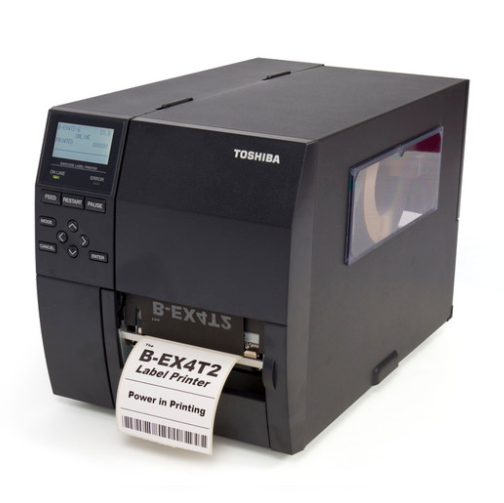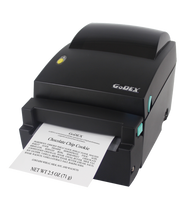Barcode Labels Not Scanning? The Mistakes You’re Making and How to Fix Them
10th Jun 2025
Is your barcode refusing to scan? you're not alone.
We've all been there. You're at the register, trying to scan a barcode, and nothing happens. Or you're using a handheld scanner in a warehouse, and the label won't register. It's frustrating, time-consuming, and can cost a business more than just a few seconds per incident.
Now, imagine if your entire inventory system, shipping process, or POS relies on barcode accuracy. One scan failure may seem insignificant, but over time, these errors snowball into productivity losses, inventory miscounts, shipment delays, and customer dissatisfaction.
At DuraFast Label Company, we understand how essential reliable barcode scanning is to your operations. We supply businesses with high-performance barcode label printers, quality materials like direct thermal and thermal transfer labels, and barcode printing software designed to ensure consistently scannable results. Whether you're running retail, logistics, healthcare, or manufacturing operations, our solutions help you avoid the most common label printing errors.
This article will go over the frequent mistakes that lead to barcode scan failures and how you can fix them. We'll address contrast issues, incorrect sizing, print resolution, and material choices—along with ways to improve your setup using the right equipment and software.
Why Barcodes Fail to Scan: Common Mistakes and How to Fix Them
1. Poor Print Quality and Resolution Issues
Barcodes need to be printed with sharp, clean lines to ensure scannability. When the lines are fuzzy, broken, or smudged, scanners may not be able to distinguish between the bars and spaces.
What causes low-resolution barcodes?
- Using an inkjet or laser printer that isn’t designed for barcode printing.
- Printing on materials that absorb ink too much.
- Choosing low DPI (dots per inch) settings.
Fix it:
- Use a dedicated thermal barcode printer. These devices are engineered to print barcodes with precision.
- Choose a resolution of at least 300 DPI. If you're printing small barcodes, go even higher.
- Use compatible label materials—like premium topcoated direct thermal labelsor thermal transfer labels—to ensure print clarity.
- Regularly clean the printhead to avoid streaks or gaps in the print.
2. Contrast Problems
A barcode is essentially a series of black bars on a white background. The more contrast between the two, the easier it is for scanners to read the code. Low contrast makes it difficult for scanners, especially affordable barcode scanners, to detect the difference.
Common mistakes include:
- Printing on colored or low-contrast label materials.
- Fading due to poor-quality inks or incorrect label type.
Fix it:
- Use white labels with black print for maximum readability.
- Opt for direct thermal labelsthat don’t require ink but still provide high-contrast results.
- For longer-lasting applications, use thermal transfer labelswith high-contrast ribbons.
- Avoid non-topcoated direct thermal labelsif your application requires durability or sunlight resistance.
3. Incorrect Barcode Sizing

Not all barcodes are created equal. If your barcode is too small, it becomes harder for the scanner to differentiate between the individual bars. If it's too large, it may not fit on the product or could be cropped during printing.
Common sizing errors:
- Shrinking the barcode to save space.
- Expanding the barcode beyond the label’s printable area.
Fix it:
- Follow the barcode specification guidelines for each symbology (e.g., UPC, Code 128, QR).
- Use barcode printing softwarethat automatically adjusts the barcode size based on the symbology and desired DPI.
- Test your barcodes with the scanners you use before mass production.
4. Improper Barcode Placement
Where you place your barcode matters. Curved or irregular surfaces can distort the barcode, making it harder for scanners to read.
Mistakes to watch for:
- Placing barcodes on edges or seams.
- Labeling over folds, curves, or textured surfaces.
Fix it:
- Place the barcode on a flat, smooth area of the product.
- If you must place it on a curve (like a bottle), use shorter barcodes or switch to 2D codes like QR.
- Choose flexible label materials that conform better to curved surfaces.
5. Incorrect Print Orientation
Scanners often read barcodes better when the bars are aligned perpendicular to the movement of the printer head. This is called "ladder orientation" versus "picket fence orientation."
Common orientation problems:
- Printing barcodes in the wrong direction, especially on high-speed lines.
Fix it:
- Configure your barcode label printer to use the best orientation for your scanning setup.
- Use label design software for printersthat allow you to preview and adjust barcode placement.
6. Improper Label Materials
Using the wrong label material can lead to barcode fading, smearing, or detachment over time. Environmental conditions—such as heat, moisture, and UV exposure—also affect material performance.
Material mistakes include:
- Using non-topcoated direct thermal labelsin high-temperature or abrasive environments.
- Selecting cheap materials that degrade quickly.
Fix it:
- For short-term indoor applications, non-topcoated direct thermal materials can work.
- For durable, long-term use, use premium topcoated direct thermal or custom thermal transfer labels.
- Consider your storage and usage environment before selecting a label.
7. Inadequate Testing and Validation
Sometimes, barcodes look fine to the naked eye but fail during scanning. This often results from skipping the validation process.
Common testing errors:
- Not scanning sample labels before full production.
- Relying solely on visual inspection.
Fix it:
- Always scan test labels with affordable barcode scannersthat are similar to those used in daily operations.
- Use barcode printing softwarewith verification tools.
- Set up a validation step in your labeling workflow.
8. Using the Wrong Barcode Type

Each barcode symbology serves a different purpose. Using the wrong one may lead to scanning errors or even system rejections.
Typical errors include:
- Using UPC when Code 128 is required (or vice versa).
- Choosing a barcode format incompatible with your POS or inventory system.
Fix it:
- Know your system requirements.
- Use barcode printing softwareto generate the correct format.
- Don’t guess—consult documentation or your software provider.
9. Inconsistent Print Settings Across Devices
Standardization is key. If your facility uses multiple printers, differences in settings can lead to inconsistency in barcode quality.
Symptoms of inconsistent print settings:
- Barcodes from one printer scan, but others don’t.
- Variability in label darkness or size.
Fix it:
- Standardize DPI and speed settings across all thermal barcode printers.
- Use centralized label design software for printersto control output.
- Provide training for staff on how to properly set up and maintain printers.
10. Low-Quality Ink and Ribbons
When using thermal transfer printers, the quality of your ribbons matters just as much as the labels themselves.
Ribbon-related issues:
- Ink that smears or flakes off.
- Incompatibility with the label substrate.
Fix it:
- Match your ribbon type (wax, resin, or wax/resin) to the label surface.
- Use high-quality ribbons for best performance.
- Store ribbons and labels in controlled environments.
11. Damaged or Obstructed Labels
Labels can get scratched, torn, or dirty during storage, transport, or use. Even slight damage can render a barcode unreadable.
Common causes:
- Contact with abrasive surfaces.
- Exposure to water or chemicals.
- Dirt and dust covering the barcode.
Fix it:
- Use durable label types like custom thermal transfer labelsfor demanding environments.
- Apply a clear overlaminate or protective coating.
- Store and handle label rolls carefully.
12. Overprinting or Misalignment
Additional text, logos, or graphics printed over the barcode can interfere with its readability.
Common layout issues:
- Printing batch codes or pricing too close to the barcode.
- Misaligned printing due to incorrect template settings.
Fix it:
- Leave adequate quiet zones (white space) around the barcode.
- Use label design softwareto lock layouts and prevent misalignment.
- Print test runs before full production.
How to Ensure Perfectly Scannable Barcodes Every Time

Getting your barcode labels to scan correctly isn't about luck—it's about precision and planning. Here’s what we recommend:
- Invest in thermal barcode printersthat match your application needs.
- Choose label materials that suit your product and environment—whether that's affordable blank inkjet labelsfor short runs, or thermal transfer labels for rugged use.
- Always pair the right ribbon with your label.
- Use barcode printing softwarewith design and verification features.
- Test sample labels using affordable barcode scannersbefore mass printing.
- Provide staff training on printing procedures and quality checks.
- Standardize templates and print settings across your operations.
- Periodically revalidate your barcodes to ensure continued scannability.
Can One Label Really Impact Productivity, Sales, and Customer Experience?
Absolutely. One faulty barcode can hold up a production line. Multiply that by a hundred, and you’ve got a real problem on your hands. Barcodes aren’t just black lines—they’re the silent drivers of efficiency, accuracy, and customer satisfaction.
That’s why it’s critical to work with a provider that understands how every element—from label material to printer model to software settings—affects your final output.
At DuraFast Label Company, we offer one of the best selections of barcode printing products, including thermal barcode printers, direct thermal and thermal transfer labels, barcode printing software, and label design tools. Whether you need premium topcoated direct thermal labels for high-performance scanning, or affordable blank inkjet labels for customized short runs, we’ve got the right solution for your needs.
Need laser sheet labels for desktop printing? Or durable custom thermal transfer labels for industrial applications? We can help. Our team works with you to recommend compatible, cost-effective options that deliver reliable scanning and lasting performance.
Order from DuraFast Label Company today to get the barcode printing solutions your business can count on. Let us help you prevent scanning issues before they start.
